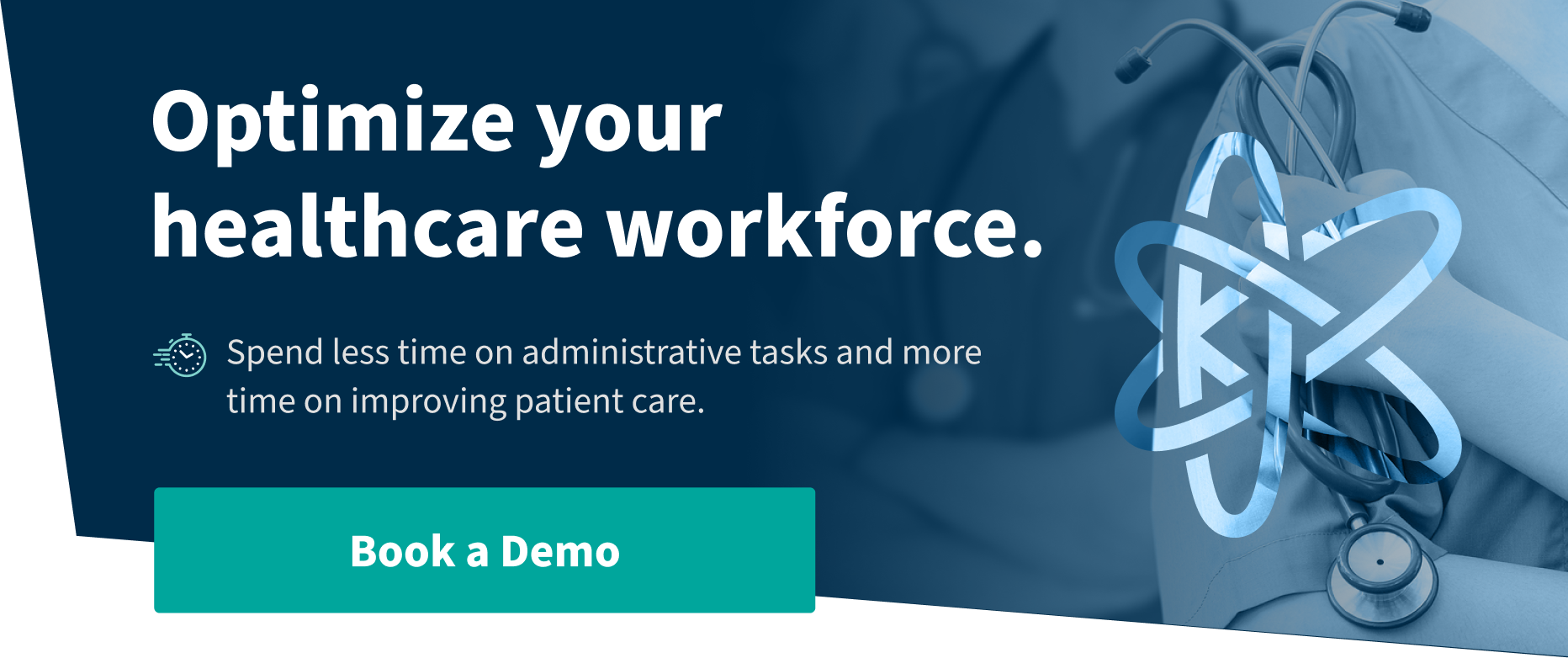Let’s talk about waste reduction in healthcare organization’s for a moment. But, we’re not talking about what you throw into the wastebasket. Though admittedly, that’s a serious issue too, the problem we want to talk about is privileging waste. We see this a lot across the healthcare industry and believe it or not, it could be costing your organization more than you think!
Regardless of the industry you’re in, you could ask anyone and they will tell you that wasting is a terrible thing to do in all aspects of life.
We’ve all heard the old English proverb “waste not, want not,” and the idea behind it is that if you waste food, supplies, or other necessities, you'll end up lacking or wanting for them when you need them later on. In essence, the point of the proverb is “don't use things carelessly.”
With that in mind, in this post we’ll dive into the dirty little secret that is costing hundreds of healthcare organizations time, money and resources. And, we’ll give you some ideas for how to reduce that waste too. Let’s dive in!
What is Privileging Waste?
Physician privileging is that vital process hospitals and healthcare systems must have in place to ensure providers have the proper credentials and expertise to treat patients. However, when physician groups rely on part-time, temporary, or locum tenens providers to supplement staffing, inefficient and duplicative privileging often occurs. This is “privileging waste.” In other words, privileging waste is when you waste time getting someone privileged, and they never work a single shift. It takes significant medical director time overseeing interviews, onboarding support, communications along with recruiters, credentialers and other operators.
For example, a hospital may privilege a group of locum physicians to prepare for increased demand or staff shortages. However, if fewer assignments end up needing coverage, several providers may receive privileges that don’t get used. This leads to wasted time and duplicative work for credentialing teams. All those precious minutes are wasting the medical director’s time that could be better allocated. This is a precious resource that is both highly specialized and could be spent working on patient care initiatives and expenses. At the very least, it could reduce administrative burdens that ultimately lead to burnout.
What Is Privileging Waste Reduction?
Like it sounds, privileging waste reduction refers to the concept of decreasing unnecessary or inefficient physician privileging within healthcare organizations. Specifically, it targets privilege requests and approvals for doctors that end up not actually being utilized or practice infrequently. While this happens most often with temporary physician staffing such as locum tenens or part-time hires, it can happen with organizations that are regularly managing physicians across multiple facilities too.
With countless doctors requiring privileges in more than one location, credentialing teams spend hours preparing privileging packets for physicians who may only cover a handful of shifts. Optimizing these processes allows healthcare organizations just like yours to cut costs while still ensuring quality care standards are met.
5 Tips to Decrease Privileging Waste

If you landed on this page and are still following along, odds are you are interested in some ideas to decrease all that precious privileging waste. Here are just five tips that can help you with that:
- Centralize data on active medical staff across facilities
- Coordinate privileging workflows across partner hospitals
- Track physician scheduling and utilization
- Automate alerts on expiring privileges
- Share profiles instead of re-privileging locums
Now, let’s break these tips down so you can level up your privilege waste reduction game!
Centralize Data on Active Medical Staff Across Facilities
The first step in optimizing inefficient physician privileging is getting visibility into your existing medical staff across all hospitals, clinics, and practices within a health system. Maintaining centralized credentialing data on every active provider, helps coordinators to quickly validate if duplicate approvals are truly required when onboarding locums or part-time hires. If a physician already has privileges at one facility, central records enable transferring or sharing existing privileging instead of completely re-credentialing doctors system-wide.
Coordinate Privileging Workflows Across Partner Hospitals
For large regional health networks, it’s a good idea to take steps to integrate and synchronize privileging workflows across all partner hospitals instead of operating separate, disconnected processes. Universal credentialing software such as Kimedics that can be set up to span all your facilities can significantly improve coordination while eliminating time-consuming manual requests to share paper files or PDFs.
Track Physician Scheduling and Utilization
Leverage scheduling systems, EHR records, and credentialing databases to actively track provider workload and usage across the health system. If certain locum tenens or part-time physicians aren’t fully utilized or aren’t active at facilities they’re privileged at, adjust accordingly by modifying or consolidating privileges during renewal.
Automate Alerts on Expiring Privileges
Modern credentialing software has automation capabilities to flag providers with privileges nearing expiration dates. This allows coordinators to proactively validate if renewal is necessary based on actual activity levels documented in the physician tracking process.
Share Profiles Instead of Re-privileging Locums
Temporary physicians can bypass extensive applications if the healthcare organization participates in a locum tenens profile sharing program with staffing agencies. This allows visitor credentials, licenses, DEA proof, insurance, and references to get ported from one facility to the next rather than completely re-verifying.
How Software Can Reduce Unnecessary Duplicate Privileging

Specialized credentialing software such as Kimedics provide healthcare organizations several capabilities to decrease privileging waste surrounding locums, part-time staff, and system-wide provider verification.
Improved Insight into Provider Utilization
Platforms that centralize verification data and integrate scheduling information allow privileging coordinators to closely monitor physician workload trends across all facilities. This visibility enables accurately right-sizing privileges by identifying doctors who ultimately end up with minimal or no worked hours after receiving approval.
Automated Privileging Workflow Tools
Streamlining redundancy is perhaps the most impactful way technology optimizes efficiencies. Modern solutions completely automate workflows to share provider profiles across hospitals compared to slow, inconsistent manual approval transfers. Platforms also auto-populate data to eliminate refilling in the same information.
Advanced Analytics and Reporting
Credentialing systems generate usage reports, analytics, and dashboard views of metrics like working hours logged per provider, cases covered by each physician, and more. This quantifiable data empowers accurate decision making on renewals to reduce over-privileging.
When you leverage capabilities in credentialing technologies, your healthcare organization can systematically reduce duplication, effort, and ultimately waste stemming from physician privileging. This efficiency fuels improved productivity, lower expenses, and more focus on quality patient care.
Streamlining Inefficient Healthcare Credentialing with Kimedics
Kimedics is the cure you’ve been seeking for all of this unnecessary privileging waste. Our software is a cloud-based workforce management platform designed specifically for healthcare organizations to optimize their staffing operations.
In a nutshell, Kimedics consolidates and automates complex administrative tasks related to managing healthcare providers so that hospitals, medical groups, and other healthcare employers can boost efficiency.
Some of the key features and benefits of Kimedics include:
- Centralized data and workflows for provider scheduling, credentialing, licensing, payroll etc
- Configurable automation for staffing rules, privilege approvals, documents etc
- Tools to simplify scheduling, time tracking, vendor collaboration
- Analytics offering real-time insights into labor costs, productivity etc
- Intuitive self-service provider portal and mobile apps
Through connecting the people, processes and information involved in workforce management onto one unified platform, Kimedics helps healthcare organizations streamline workflows, reduce costs, improve collaboration and enhance outcomes.
The driving motivation behind Kimedics is allowing healthcare administrators to focus on improving patient care by spending less time on repetitive administrative tasks. It aims to automate the busywork through smarter technology tailored for healthcare.
In summary, Kimedics is a healthcare-specific workforce management solution designed to simplify operations for medical staffing offices, hospitals, HR teams, and other healthcare employers and administrators. Our world class platform acts as an automation-enabled command center to tame the complexity of healthcare workforce management.
Bottom line - if you’re looking for an easy to use solution that can help you with privileging waste reduction, Kimedics is it.
We’ve helped countless organizations save time, money, and effort. In fact, in one of our recent case studies, we shared how we have helped unused privileges decrease from 25% to 5% across more than 100 providers.
Check out some of our other case studies to learn what else we’ve done for healthcare organizations as well. Just to name a few, we’ve helped:
Imagine all the time you could save decreasing privileging waste by up to 20% in your organization. We would love to help you do just that! Click here to book a demo with us and see what we can do for you.


